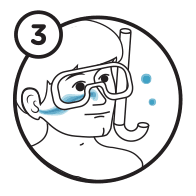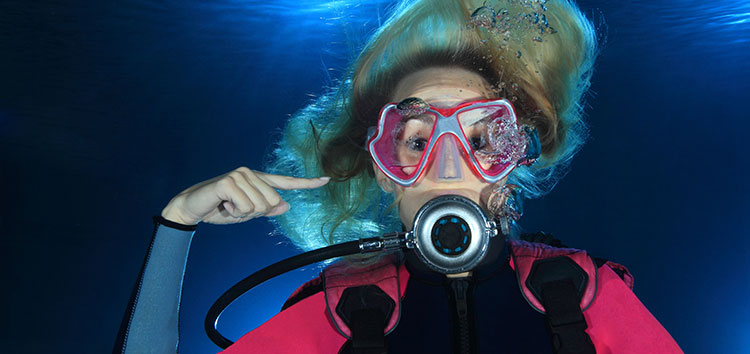
Otovent and Diving..
What is Equalising?
Descending in water exerts greater pressure on your body’s air spaces than it would outside of water (eg. When using a lift or stairs). This is because water is denser than air, a theory known as Boyle’s Law.
To protect your ears when diving you must counter the pressure. The most popular means of achieving this is the Valsalva Manoeuvre, the act of exhaling against a closed airway. This process is known as equalising.
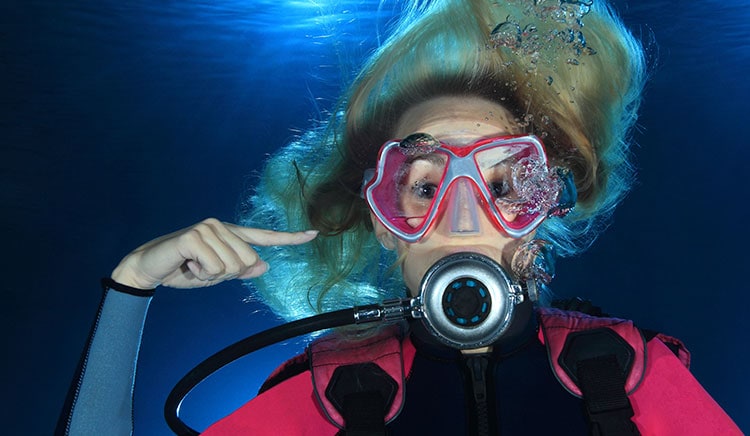
Equalization
Equalizing contributes air volume to the ear’s air spaces so that they can approximate the ambient pressure outside of your body.
Failure to equalize allows the gas volume of air spaces to decrease causing them to be squeezed. This is what is meant by the scuba diving term ‘ear squeeze’.
You should equalise every 2 – 3 ft (1m) and it is especially important in the first 5 – 10 metres of the dive as this is when the largest proportional pressure change occurs.
Click play on the short animation to the left to learn more about how Otovent Dive works.
What happens to your ears if you don’t equalise?

1ft (30cm) below the surface:
Water pressure increases to 0.445 psi more than on the surface. You feel the pressure on your ears as the eardrums flex inwards.

4ft (1.2 m) below the surface:
Water pressure increases to 1.78 psi causing your eardrums to bulge into your middle ears along with the membranes between each section of your ears. As your nerve endings stretch your ears become painful.

6ft (1.8 m) below the surface:
Water pressure increases to 2.67 psi. The tissues of your ear drum tear due to over-stretching. The resulting inflammation will last for up to a week. Small blood vessels in your eardrums can expand or even break causing bruising which can last for up to 3 weeks. Equalisation is now impossible as your Eustachian tubes have become locked shut. Your ears are becoming increasingly painful.

8ft (2.4 m) below the surface:
Water pressure increases to 3.56 psi. Middle ear barotrauma can occur where blood and mucus from surrounding tissues fill the middle ear. Fluid rather than air then equalises pressure on your eardrums. A feeling of fullness in your ears replaces pain and will remain for at least a week until the fluid is reabsorbed into your body.

10ft (3 m) below the surface:
Water pressure increases to 4.45 psi. Descending quickly to this level can cause your eardrums to break. If this happens the sudden rush of cold water into your ear can cause you to experience vertigo. Inner ear barotrauma can occur if the membrane between your middle and inner ears is ruptured, sometimes resulting in permanent hearing damage.
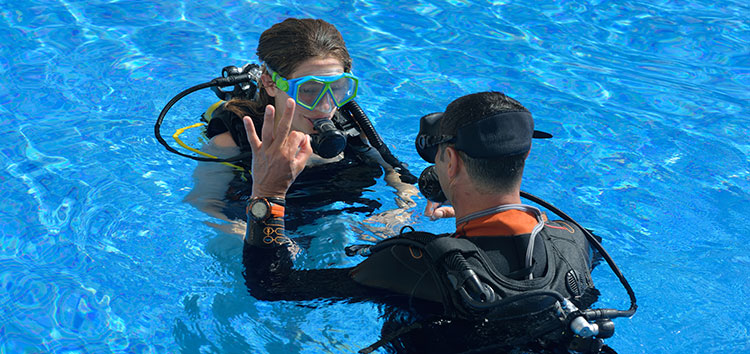
Otovent as a visual aid to equalising
How To Use Otovent
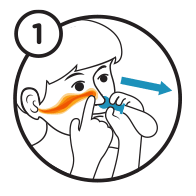
Connect
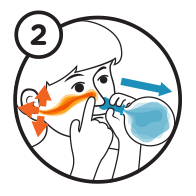
Inflate
